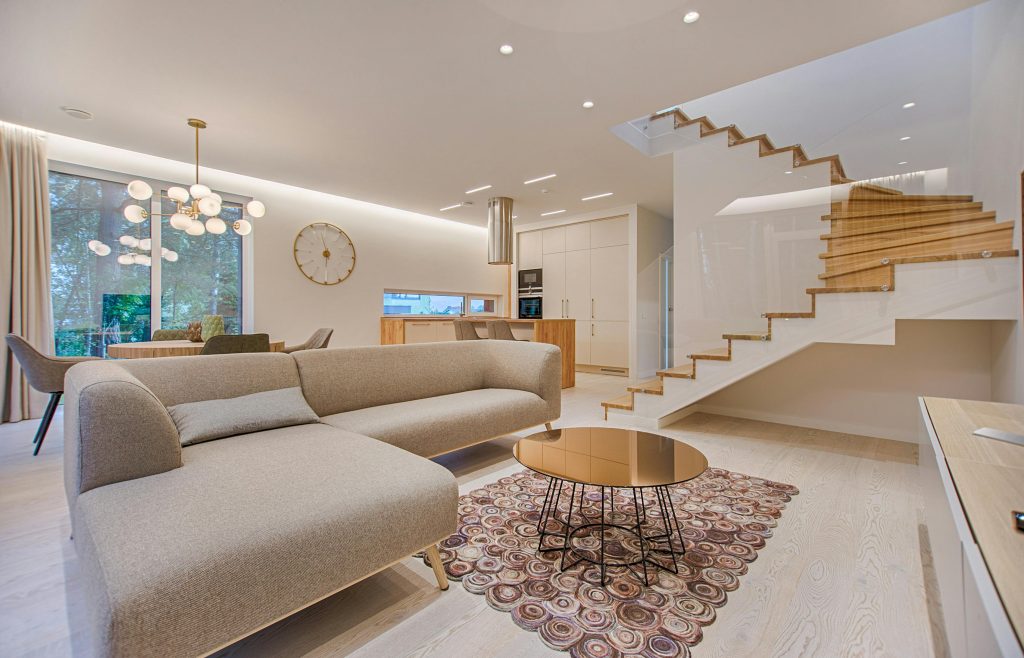Interior design is often misunderstood as a mere aesthetic pursuit, focusing solely on selecting pretty colors and fashionable furniture. However, the reality is far more complex and multifaceted. This blog aims to dispel common misconceptions about interior designing, shedding light on the true nature of this creative and technical profession.
Misconception 1: Interior Design is All About Decoration
One of the most prevalent misconceptions about interior designing is that it’s synonymous with decoration. While aesthetics undoubtedly plays a crucial role, it’s merely one aspect of the process. Interior designers are skilled professionals who consider a multitude of factors beyond surface-level appearances.
●Functionality: Creating spaces that are not only visually appealing but also functional is a core principle of interior design. This involves optimizing layouts, maximizing storage, and ensuring ease of use.
●Ergonomics: Interior designers prioritize the well-being of occupants by considering factors like lighting, acoustics, and furniture placement to enhance comfort and productivity.
●Space Planning: Effective space planning is essential for maximizing the potential of any room. Interior designers excel at creating efficient and harmonious layouts.
Misconception 2: Interior Designers Are Only for the Wealthy
Another common misconception is that interior design services are exclusively for the affluent. While it’s true that high-end projects often involve substantial budgets, interior designers can work with clients across various income levels.
●Budget-Friendly Solutions: Interior designers can provide valuable guidance on stretching budgets and finding cost-effective alternatives without compromising on style.
●DIY Assistance: Even if you prefer to handle the project yourself, an interior designer can offer expert advice and create a design plan to follow.
●Long-Term Investment: Investing in professional interior design can enhance the value of your property and create a more enjoyable living space.
Misconception 3: Interior Design is Just About Following Trends
While staying updated on design trends is important, successful interior design goes beyond fleeting fashions. True interior design focuses on creating timeless spaces that reflect the client’s personality and lifestyle.
●Personalization: Interior designers collaborate closely with clients to understand their unique needs and preferences, ensuring the final design resonates with them.
●Classic Aesthetics: Incorporating classic elements into a design can create a space that stands the test of time, avoiding the need for constant updates.
●Sustainability: Many interior designers prioritize eco-friendly materials and practices, demonstrating a commitment to sustainable design.
Misconception 4: Interior Designers Dictate Their Style
Contrary to popular belief, interior designers are not there to impose their personal style on clients. Their role is to collaborate and create spaces that align with the client’s vision.
●Client Collaboration: Interior designers actively listen to clients’ ideas and preferences, incorporating them into the design process.
●Style Consultation: They offer expert guidance on different styles and help clients refine their vision.
●Compromise and Adaptation: Interior designers are skilled at finding common ground and creating designs that satisfy both the client and their own aesthetic sensibilities.
Misconception 5: Interior Design is Only for Homes
Interior design is not limited to residential spaces. It encompasses a wide range of environments, including commercial, hospitality, and healthcare settings.
●Office Design: Creating functional and inspiring workspaces is a crucial aspect of interior design.
●Hospitality Interiors: Designing hotels, restaurants, and other hospitality venues requires a deep understanding of customer experience.
●Healthcare Environments: Interior design plays a vital role in creating calming and healing spaces within healthcare facilities.
By dispelling these common misconceptions about interior designing, it becomes clear that this profession is far more comprehensive and impactful than often perceived. Interior designers are skilled professionals who combine creativity, technical expertise, and a deep understanding of human behavior to create spaces that enhance people’s lives. So, the next time you consider interior design, remember that it’s about more than just aesthetics; it’s about creating functional, comfortable, and inspiring environments.
Keywords: interior design misconceptions, interior design myths, interior designer, interior design process, interior design styles, interior design trends, interior design tips, interior design career, interior design education, interior design portfolio, interior design inspiration, interior design software, interior design magazine, interior design blog.

